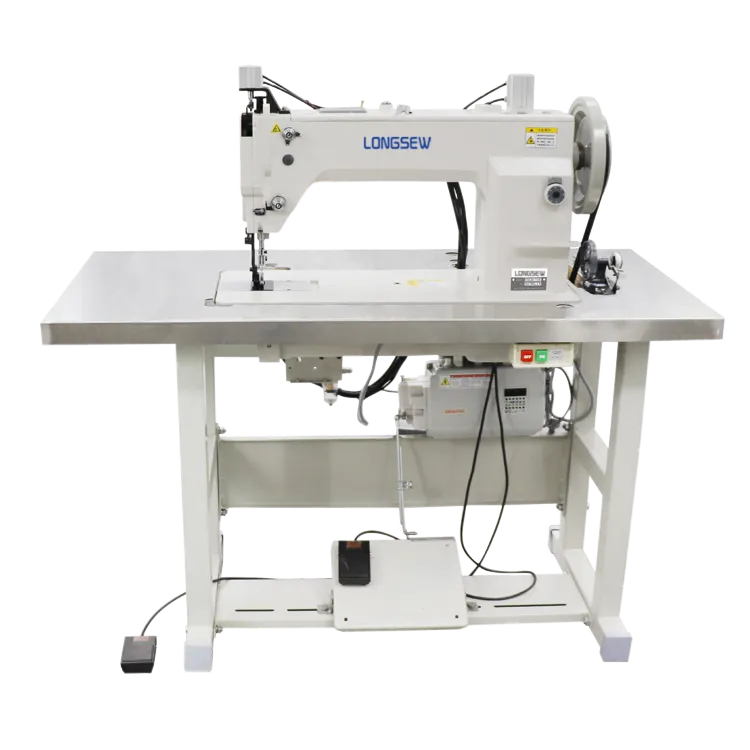Exploring the Benefits and Features of Industrial Overlock Sewing Machines for Efficient Stitching Solutions
The Importance of Industrial Overlock Sewing Machines in Modern Textiles
In the realm of textile manufacturing, efficiency and precision are paramount. Among the plethora of sewing machines available, industrial overlock sewing machines have carved a niche for themselves, becoming indispensable tools in the garment industry. These machines, often referred to as sergers or overlockers, perform a unique function that significantly enhances the quality of fabric seams and the overall durability of garments.
What is an Overlock Sewing Machine?
An industrial overlock sewing machine is designed to join two or more pieces of fabric together while simultaneously trimming the excess fabric at the edges. It uses multiple threads and specialized stitches to create a secure, professional-looking finish. The term overlock comes from the machine's ability to wrap the thread around the edge of the fabric, preventing fraying and creating a clean look. This makes them particularly useful for knit and stretch fabrics, which are common in modern apparel.
Efficiency in Production
One of the primary advantages of using an industrial overlock sewing machine is its efficiency. These machines operate at high speeds, often exceeding 7,000 stitches per minute. This rapid production capability allows garment manufacturers to meet the high demands of the fashion industry while maintaining consistent quality. In a world where fast fashion dominates, the ability to quickly produce items without compromising on the integrity of the seams is crucial.
Moreover, overlock machines are designed to handle heavy workloads. Unlike domestic sewing machines, which may struggle with thicker fabrics or multiple layers, industrial overlock machines are built to accommodate various materials, from lightweight jersey to heavy denim. This versatility makes them a favorite among manufacturers who produce a wide range of garment types.
Quality Assurance
overlock sewing machine industrial

Quality is a key concern for any textile manufacturer. Overlock sewing machines contribute to higher quality outputs by creating durable seams that withstand stress and movement. The overlocking stitch is inherently stronger and more flexible than a standard straight stitch, making it ideal for garments that require stretch, such as athletic wear or fitted clothing. This ensures that the end products do not only look good but also last longer, reducing return rates and improving customer satisfaction.
Furthermore, the capability of overlock machines to cut and finish edges simultaneously minimizes the risk of fraying and unraveling. This single-step process ultimately saves time and reduces labor costs, allowing manufacturers to allocate resources more effectively.
Technological Advancements
The evolution of industrial overlock sewing machines has brought about significant technological advancements. Modern machines now come equipped with features such as automatic threading, adjustable stitch lengths, and digital interfaces that simplify operation. Some models even include multifunctional capabilities, allowing users to switch between different types of stitches with ease.
These innovations not only enhance the user experience but also improve the adaptability of the machines to various sewing tasks. With the integration of technology, manufacturers can produce more complex designs and styles that cater to changing fashion trends.
Conclusion
In conclusion, industrial overlock sewing machines play a vital role in the textile industry. Their ability to deliver high-speed, quality stitching while ensuring durability makes them essential for garment manufacturers. As the fashion industry continues to evolve, the relevance of these machines is only set to increase. For businesses aiming to stay competitive in a fast-paced market, investing in advanced overlock sewing technology is a strategic move that can lead to better productivity, superior quality, and ultimately, greater profitability. The journey of fabric transformation from raw material to finished garment is significantly streamlined by the capabilities of industrial overlock sewing machines, highlighting their importance in the modern textile landscape.
-
Leather Sewing Machine: The Industrial Standard for Tough MaterialsNewsJul.18,2025
-
Sail Making Machine: Heavy-Duty Stitching for Industrial and Marine NeedsNewsJul.18,2025
-
Sling Sewing Machine: The Backbone of Heavy-Duty FabricationNewsJul.18,2025
-
Leather Sewing Machine: Precision for Heavy-Duty StitchingNewsJul.18,2025
-
Big Bag Sewing Machine: Powering the Future of Bulk PackagingNewsJul.18,2025
-
FIBC Sewing Machine: Essential Equipment for Bulk Bag ProductionNewsJul.18,2025
-
Heavy Duty Leather Sewing Machine: A Must-Have for Professional LeatherworkNewsMay.28,2025





























